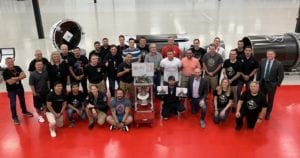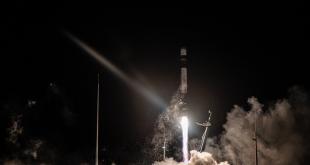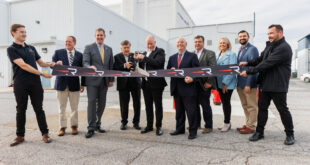
Rocket Lab is celebrating completion of the company’s 100th Rutherford engine.
Rocket Lab began development on the world’s first 3D printed, electric turbo-pump fed engine in 2013. Within the same year, Rutherford was test fired for the first time, marking the beginning of a new generation in rocket propulsion. Today, 70 Rutherford engines have been launched to space on Electron missions, the most recent being the ‘Make It Rain’ mission launched on 29 June 2019 from Rocket Lab Launch Complex 1.
Rocket Lab CEO Peter Beck says Rutherford’s unique 3D printed design was developed with the single-minded goal of producing a reliable and high-performing rocket engine that could be manufactured quickly, efficiently and in high-volumes.
“The Rutherford engine has played an integral part in enabling Rocket Lab to make frequent and reliable launch a reality for small satellites,” says Mr. Beck. “It’s a testament to our innovative design and manufacturing teams that we’ve achieved everything we set out to do in just a few short years; an entirely new type of rocket engine that delivers unmatched performance, boasts a proven record of 100% launch reliability and can be manufactured quickly and efficiently.”
Rocket Lab’s Vice President of Propulsion Lachlan Matchett has led the Rutherford engine program since its inception, and later played an integral role in the development of Curie, the 3D printed propulsion system on Electron’s innovative Kick Stage.
“Rutherford’s unique design certainly went against the grain of traditional rocket propulsion systems, so to make it to 100 flight-ready engines, more than 28,000 seconds of engine test run time and seven successful launches is a proud moment for the team,” says Mr. Matchett.
To meet a growing launch manifest, Rocket Lab has recently expanded its propulsion manufacturing and test teams, and also increased its 3D printing facilities in Huntington Beach to produce 200 Rutherford engines in the next 12 months. The engines will be integrated onto Electron vehicles for lift-off from Launch Complex 1 in New Zealand, as well as Launch Complex 2 at the Mid-Atlantic Regional Spaceport in Wallops Island, Virginia USA.





